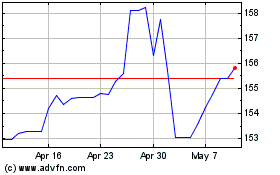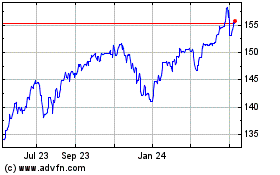IMF Cuts Forecasts Saying Global Growth "Moderate And Uneven"
October 06 2015 - 6:57AM
RTTF2
Global growth remains 'moderate and uneven' amid the modest
pick-up in advanced economies and the slowdown in emerging markets,
and the more pronounced downside risks call for policy action to
boost economic expansion, the International Monetary Fund said, as
it cut its world growth forecasts for this year and next.
In its latest World Economic Outlook (WEO), the Washington-based
lender lowered the global growth forecast for this year to 3.1
percent from 3.3 percent. The outlook for next year was slashed to
3.6 percent from 3.8 percent. In 2014, the world economy grew 3.4
percent.
The WEO report was released on Tuesday in the Peruvian capital
Lima, where the IMF is holding its 2015 Annual Meetings between
October 9 and 11.
"Six years after the world economy emerged from its broadest and
deepest postwar recession, the holy grail of robust and
synchronized global expansion remains elusive," Maurice Obstfeld,
the IMF Economic Counsellor and Director of the Research
Department, said.
"Despite considerable differences in country-specific outlooks,
the new forecasts mark down expected near-term growth marginally
but nearly across the board. Moreover, downside risks to the world
economy appear more pronounced than they did just a few months
ago."
In this global environment, with the risk of low growth for a
long time, the report highlights the need for policymakers to raise
actual and potential growth, the IMF said.
Growth forecasts for advanced economies were cut to 2 percent
from 2.1 percent for this year and to 2.2 percent from 2.4 percent
for next year.
Projection for the U.S. economy for this year was raised to 2.6
percent from 2.7 percent, while that for next year was lowered to
2.8 percent from 3 percent.
Euro area growth forecast for this year was retained at 1.5
percent, while the outlook for next year was cut to 1.6 percent
from 1.5 percent.
Among the big four, Germany's projection for both years were
lowered, while those of France and Spain were retained, and Italy's
outlook was raised.
Growth forecasts for Japan and Canada for both years were
lowered, while the UK's projection for this year was boosted to 2.5
percent and the outlook for next year was retained at 2.2
percent.
Overall emerging market growth was forecast to ease to 4 percent
this year from 4.6 percent in 2014. However, it was seen rebounding
to 4.5 percent next year.
The projected rebound in growth in emerging market and
developing economies in 2016 reflects not a general recovery, but
mostly a less deep recession or a partial normalization of
conditions in countries in economic distress this year, spillovers
from the stronger pickup in activity in advanced economies, and the
easing of sanctions on Iran, the IMF said.
Further, the lender noted that external conditions are becoming
more difficult for most emerging economies, but many have increased
their resilience to external shocks and are now in a stronger
position to manage heightened volatility.
China's growth projections were retained at 6.8 percent and 6.3
percent, respectively. Meanwhile, India's growth forecast for this
year was cut to 7.3 percent from 7.5 percent, while the projection
for next year was retained at 7.5 percent.
Brazil's projections were severely slashed to 3 percent
contraction this year and 1 percent output decline next year.
Russia also had its outlook lowered to 3.8 percent contraction for
this year and 0.6 percent in 2016.
South Africa was forecast to log 1.4 percent growth this year
and 1.3 percent next year. Oil-exporter Saudi Arabia's growth
outlook for this year was boosted to 3.4 percent from 2.8 percent,
but the forecast for next year was cut to 2.2 percent from 2.4
percent.
US Dollar vs Yen (FX:USDJPY)
Forex Chart
From Mar 2024 to Apr 2024

US Dollar vs Yen (FX:USDJPY)
Forex Chart
From Apr 2023 to Apr 2024
